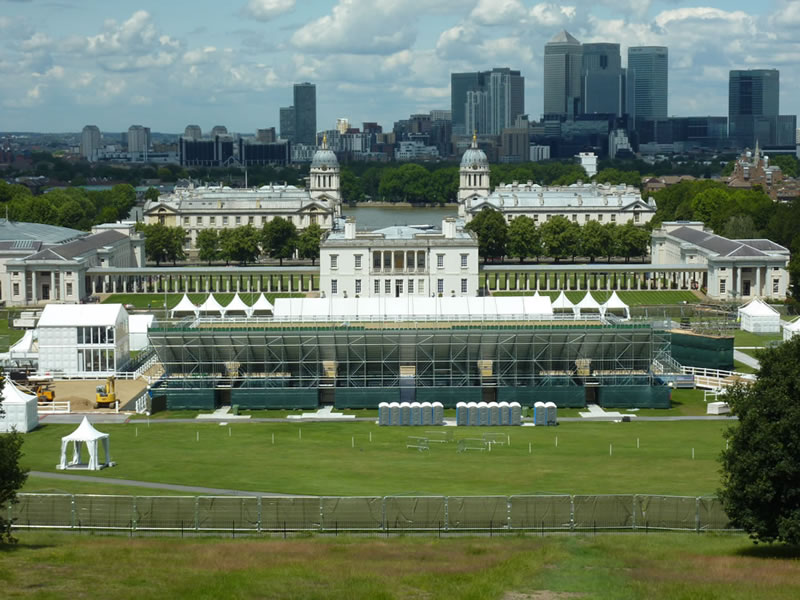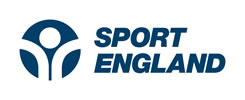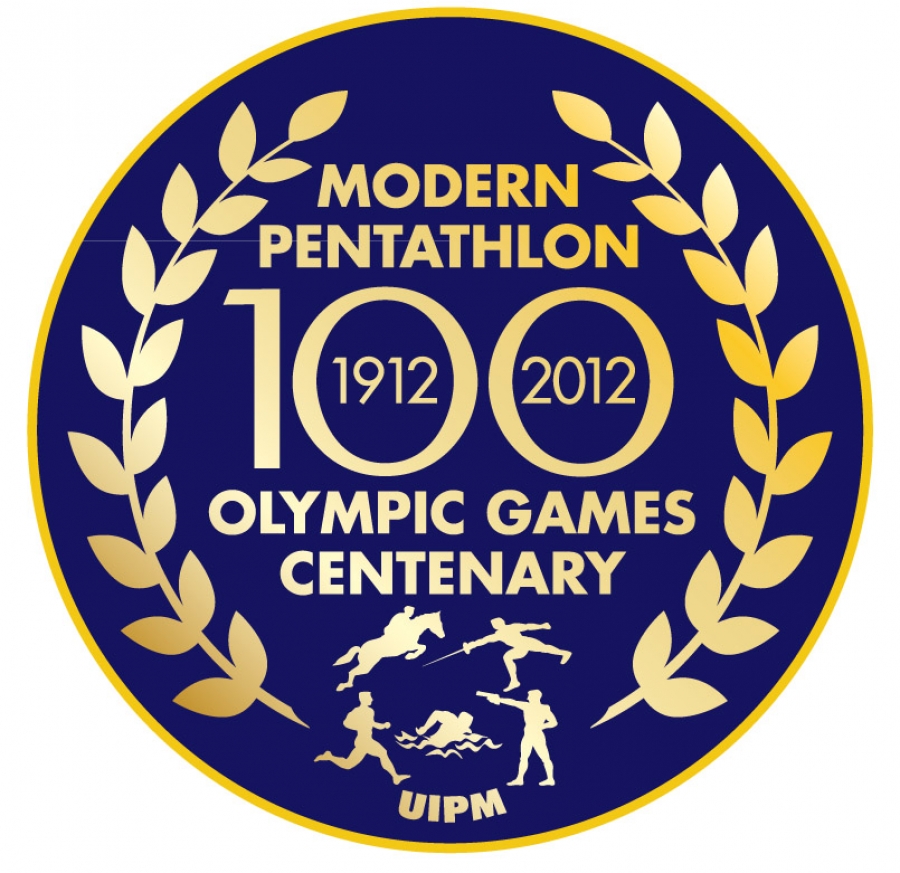About Pentathlon
- Pentathlon Explained
- History
- Pentathlon Events
- Related Events
- Getting Started
Introduction
The Olympic sport of Modern Pentathlon comprises the contemporary sports of pistol shooting, fencing, swimming, horse riding and running. The sport was introduced at the 1912 Olympics by the founder of the modern Olympic Games, Pierre de Coubertin, and embraced the spirit of the Pentathlon of the ancient Greek Games, where the five sports were running, jumping, javelin, discus and wrestling.
The choice of the five diverse and unrelated sports that make up the Modern Pentathlon arose out of the romantic, tough adventures of a liaison officer whose horse was brought down in enemy territory. Having defended himself with his pistol and sword, he swims across a raging river and delivers the message on foot.
Since the sport was created it has undergone many changes in format. Originally taking place over 5 days the sport changed to a one day format for the 1996 Atlanta Olympic Games. Women competed in the Olympics for the first time at Sydney in 2000. In 2008 the international federation for Modern Pentathlon voted for the shooting and running to be combined and in 2010 the shooting format was changed from air pistols to laser shooting.
Disciplines - Summary
This information relates to distances and target times for senior events. Younger athletes compete at shorter distances with target times and scores adjusted accordingly. Full details can be found in the rules
Fencing: Athletes fence all other competitors once using electric epees. Bouts are fenced for one hit and last a maximum of one minute. Double hits are annulled. If neither fencer has scored a hit within the time limit, a double defeat will be recorded.
Swimming: A 200m freestyle swim, where the athletes are seeded in heats according their personal best times. A time of 2 minutes 30 seconds equates to 1000 pentathlon points.
Riding: Athletes ride unfamiliar horses over a series of 12 show-jumping obstacles. The leading athlete after the previous disciplines draws their horse by lot. On the basis of this draw, the other horses (which have been previously numbered) are allocated to the other competitors. The athletes have just 20 minutes in the warm-up arena over five practice jumps before coming out to compete.
Combined event (running and shooting): The climax to the competition. The combined event begins with a handicapped start, calculated on the basis of the results after the previous events. It is a two discipline event, where athletes run a total distance of 3200m. The run is interspersed by shooting four sets of 5 electronic targets. Only after having hit 5 targets with an unlimited number of shots OR after a time of 50 seconds can the competitor start from the firing point to perform each running leg of 800m. The first person to cross the line is the winner. A time of 13 minutes 20 seconds equates to 2000 pentathlon points.
Disciplines - Detail
Fencing
Format:
- Pentathletes rotate around the fencing salle in pairs;
- Athletes fence all other competitors once using electric epees.
- Bouts are fenced for one hit and last a maximum of one minute.
- They must stay within the parameters of their fencing piste at all times during a bout.
- To win a bout, fencers must make contact with any part of their opponent’s body with the tip of the epee.
- A buzzer will sound when a hit has been made and a light on the scoreboard for that piste indicates who has won.
- Double hits are annulled, the system is re-set and the bout continues for the remainder of the minute.
- If neither fencer has scored a hit within the time limit, a double defeat will be recorded.
Scoring:
The value of a win varies with the number of competitors. Seventy per cent of bouts won corresponds to 1000 pentathlon points. At an international with 36 competitors, this means 25 bouts won equates to 1000 points with each victory or defeat worth 24 pentathlon points.
Swimming
Format:
The swimming event is a 200 metre freestyle race - eight lengths of the 25 metre pool.
Swimmers are seeded in heats according to their previous personal best times.
Scoring:
The times that the swimmers achieve are translated into pentathlon points. A time of 2minutes 30seconds equates to 1000 pentathlon points. Every third of a second above or below this time equals plus or minus four pentathlon points.
Riding
Format:
- In Modern Pentathlon, the athletes ride unfamiliar horses brought in by the organisers for the event.
- The leading athlete after the previous disciplines draws their horse by lot. On the basis of this draw, the other horses (which have been previously numbered) are allocated to the other competitors.
- The athletes have just 20 minutes in the warm-up arena to get to know their horse and take them over five practice jumps before coming out to compete.
- The ride course features a series of 12 show-jumping obstacles which include a double and a treble at a height of 1m 20cm.
- The athlete must complete the course within the optimum time to avoid time penalties.
- Each horse is ridden by two pentathletes during the competition.
Scoring:
Competitors start with a base score of 1,200 pentathlon points. Points are then deducted for faults as follows:
- 40 points for each fence knocked down ;
- 40 points for a refusal;
- 40 points for falling off or for knocking down a fence during a refusal;
- 4 points for every second over the optimum time for the course.
Combined event (running/shooting)
Format:
- The climax of the competition where athletes run a total distance of 3200m and shoot at 20 targets.
- The combined event begins with a handicapped start, calculated on the basis of the results after the previous events, with each 4 points being worth one second of handicap.
- The athlete with the most pentathlon points after the swim, fence and ride starts first.
- Once given their start signal, the athletes run to the range where they aim to hit five targets.
- Only after having hit 5 targets with an unlimited number of shots OR after a time of 50 seconds elapses can the competitor leave the firing point to perform each running leg of 800m.
- This is repeated three more times before the athletes cross the finish line at the end of the fourth 800m circuit.
Scoring:
The winner of the competition is simply the first person to cross the finish line.
The athletes are awarded pentathlon 2,000 points based on an optimum time of 13 minutes 20 seconds.
The History of Modern Pentathlon

The Ancient Games
The Pentathlon was introduced for the first time at the 18th Olympiad in 708 BC, probably by the Spartans as a method of training soldiers. It consisted of running the length of the stadium, jumping, throwing the spear, throwing the discus and wrestling. The Pentathlon held a position of unique importance in the Games and was considered to be the climax, with the winner ranked as "Victor Ludorum”.
Admiration for the ancient Pentathlon was shared by the founder of the Modern Olympic Movement, Baron Pierre de Coubertin, who expressed his support for the concept of a Pentathlon most eloquently and forcefully in his Memoires Olympiques, published in 1931. From 1909, he tried to have the event introduced into the Olympic programme and, after two failed attempts, Pentathlon’s moment came at the 14 th session of the International Olympic Committee in Budapest in 1911, when as the Baron stated: "The Holy Ghost of sport illuminated my colleagues and they accepted a competition to which I attach great importance.”
The Modern Pentathlon
The Modern Pentathlon, introduced at the 5th Olympiad in Stockholm in 1912, embraced the spirit of its ancient counterpart. It comprised the contemporary sports of pistol shooting, fencing, swimming, horse riding and running. It was de Coubertin’s belief that it would be the event, above all others, that "tested a man’s moral qualities as much as his physical resources and skills, producing thereby the ideal, complete athlete.”
The choice of the five diverse and unrelated sports that make up the Modern Pentathlon arose out of the romantic, tough adventures of a liaison officer whose horse is brought down in enemy territory. Having defended himself with his pistol and sword, he swims across a raging river and delivers the message on foot. Not surprisingly, it was the military who most enthusiastically adopted this new sport with its inherent demands of courage, co-ordination, physical fitness, self-discipline and flexibility in ever changing circumstances. A young American Lieutenant, later to be the famous 2 nd World War General George S. Patton, was to finish fifth in the first ever Olympic Modern Pentathlon competition and, for many years, the Modern Pentathlon was used as part of the final examinations at a number of European Military Academies. The mixture of physical and mental skills demanded in the Pentathlon has also meant that athletes have been able to compete in as many as three or four Olympic Games. This is because, whilst running and swimming times can be expected to decline with age, experience and skill in the technical disciplines often increase.
The oldest Olympic gold medallist in the Modern Pentathlon to date is the Russian Pavel Lednev, who was 37 years old at the 1980 Games in Moscow.
Today, both men and women complete all five events of the Modern Pentathlon in one day. Youth events are completed over two or exceptionally three days. A points system for each event is based on a standard performance earning 1,000 points. The winner is the Pentathlete who has accumulated the most points after the five events. At official competitions held under the auspices of the International Modern Pentathlon Union (UIPM), there is some flexibility in the order of events, but the running must always be the final event.
Governance of Modern Pentathlon
Until 1948 Modern Pentathlon was administered directly by the International Olympic Committee (IOC). Since then, it has been administered by the International Modern Pentathlon Union (UIPM), which was founded by Gustaf Dryssen (1920 Olympic Champion) from Sweden as its first President, with Sven Thofelt (1928 Olympic Champion) as its Secretary General, and later to be President for 28 years.
In 1960, Biathlon (cross country skiing and rifle shooting) was introduced in the Olympic Programme and joined the Union which thereafter became the Union Internationale de Pentathlon Moderne and Biathlon (UIPMB). In 1993, an agreement was made to retain the Union as an umbrella body under which the UIPM and the International Biathlon Union (IBU) could act autonomously. The UIPM, however, continued to be the only international multi-sport organisation recognised by the IOC until Triathlon was introduced the Olympics.
International Modern Pentathlon Competitions
Olympic Games
From 1912 to 1980 the Olympic Modern Pentathlon competition was held over five days with one event per day. Between 1984 and 1992, experiments with the format of the sport meant that the competition was held over four days with either running and shooting or swimming and shooting on the same day. There were individual medals awarded and Team medals were decided by adding the three individual scores of Team members together.
For the Atlanta Olympic Games in 1996, the competition was a one-day event in which 32 men who qualified at pre-Olympic competitions participated. Only individual medals were awarded. In 1998, the UIPM received approval for women to compete in the Sydney 2000 Olympics Games.
In Sydney 2000, 24 men and 24 women competed in the individual competition. For the first time in history, the Pentathlon venues were 96% sold out. Stephanie Cook won the Gold Medal for Great Britain in the Women’s’ Modern Pentathlon.
In Athens 2004, 32 men and 32 women competed in the individual competition.
World Championships
World Championships take place annually for the following age groups: Men, Women, Junior Men and Women, Youth A (boys and girls 17-18 years)
Youth World Championships differ slightly in their format in that they do not include riding. A number of at least 96 Men and Women may compete at the World Championships, having achieved a qualifying standard.
There are three elements to the World Championships:
- Semi-Finals for the Individual competition;
- Finals for the Individual competition and
- The Team Relay competition.
Athletes qualify for the Final via two or three Semi-Final groups of up to 36 athletes. If there are two Semi-Finals the top 18 from each qualify. Where there are three semis the top 12 in each semi are promoted.
The Final is therefore comprises the best 36 competitors from such qualification. Individual medals are awarded as well as team medals which are decided by adding the three individual team member’s scores together.
Team Relay
The Team Relay event consists of 16 teams of three athletes competing in a continuous relay completed in one day. Each Team Member fires 10 shots, swims 100m, fences one opposing team member, runs 1,500m, and rides a horse over 8 x show jumps. In this way, the relay competition is an exciting spectacle requiring contribution form each team member in every event.
World Cup Competition
A World Cup series for both Men and Women has been organised since 1990.
The best 36 athletes qualify for the World Cup Final via a league table constructed from their three best results at World Cup competitions. The very best 36 athletes are guaranteed to compete in the Finals.
Events related to Modern Pentathlon

Modern Biathlon
Biathlon consists of any two of the above events, the most common combination being running and swimming. There is an official British Championships each year (usually in May) with qualifying competitions held in the Regions in the two months leading up to the event.
Pentathlon GB also runs a British Championships for Schools Biathlon competitions. This comprises a series of qualifying competitions held during the Autumn term right around Britain which lead to semi finals and ultimately the Championships in the Spring. This website has a section devoted to Schools competitions.
Modern Triathlon
The British Modern Triathlon Championships comprise running, swimming and shooting and are held normally in October or November. However, technically, a Modern Triathlon competition can consist of any three of the five disciplines of Modern Pentathlon. Although the official form of shooting at the top level uses laser pistols, the Triathlon competition in UK still uses air pistols, to encourage good shooting skills.
Modern Tetrathlon
Modern Tetrathlon (four events) is usually Modern Pentathlon without the horse riding. A British Championships is held each year, usually in February.
Biathle
Biathle combines the two basic elements of Modern Pentathlon, running and swimming, in a spectacular continuous format run-swim-run. Capable of being organised in any season, indoors or outdoors, Biathle consists of running 1,500 metres, swimming 100 metres and running another 1500 metres to the finish line, although younger age groups compete at shorter distances. Great Britain has a great track record at Biathle which has its own section on this website.
Getting Started in Modern Pentathlon
Pentathlon GB provides a structure for its members to compete and train at club, region, national and international levels. History shows that many of our Olympians have started at grass roots level of the sport and progressed to the highest level.
Getting started in Modern Pentathlon can seem a bit daunting, after all, I have got to be able to compete at five events to be able to take part, right? Absolutely not!! The Modern Pentathlon Association arranges events for just two disciplines, run and swim (Biathlon and Biathle) through to competitions involving all five disciplines which make up the Modern Pentathlon. This section, by way of some Questions and Answers tries to deal with some of the most frequent questions we are asked.
If you can't find an answer to your query here, just pick up the phone or email us (details are on the contacts page) and someone will be able to help you get started.
Q. I can only run and swim – can I compete in Modern Pentathlon competitions?
A. Many of our athletes and members come from a background of single sports or a combination of a number of sports; it is very rare that an athlete comes to pentathlon with competence in five sports.
The MPAGB competition calendar has many biathlon (running and swimming) and Biathle (run/swim/run continuously) competitions for all age groups and abilities.
Q. I already compete in the Pony Club Tetrathlon – what is the difference between this and Modern Pentathlon?
A. Pony Club Tetrathlon consists of running, swimming, shooting and cross country riding. The running and swimming distances are different, shooting is done on a different target with a different shooting points system and the riding is cross country using the athletes own horse.
Probably the most essential differences are that:
- The Pony Club Tetrathlon is not an Olympic Sport and
- The Pony Club does not allow athletes to compete beyond the age of 25.
On first sight it would appear that both competition formats are completely different, however, athletes have successfully competed in both and gone on to compete and win medals at the Olympic Games; with Danny Nightingale wining the Gold Medal in the Montreal Olympics and Steph Cook and Kate Allenby wining the gold and bronze medal respectively at the Sydney Olympics and Georgina Harland winning the Bronze Medal in the Athens Olympics.
We feel that if you are a Pony Club Tetrathlete you could benefit through competing more frequently and also by having an opportunity to continue to compete in multi sport after finishing with your Pony Club Tetrathlon career, and who knows, you could compete at the Olympic Games.
Q. What are the Age Groups for Modern Pentathlon?
The official age groups for Modern Pentathlon are shown in the table below. Some local competitions will allow under 10s (Minis) to compete but this is at the discretion of the organiser.
| Ages (as at 31st December) | Age Group |
|---|---|
| 10yrs | Youth E |
| 11/12yrs | Youth D |
| 13/14yrs | Youth C |
| 15/16yrs | Youth B |
| 17/18yrs | Youth A |
| 19-21yrs | Junior |
| 22-35yrs | Senior |
| 36 yrs+ | Masters |
Q. What distances and times do I have to compete at?
Modern Pentathlon is based on a system of scoring pentathlon points depending on the score or time that you record in each discipline. For each discipline there is a target time or score which is equivalent to 1000 pentathlon points. If you do better (or worse) that that target score you accumulate more (or fewer) pentathlon points.
The target times and scores depend on your age group. The Pentathlon Explained page has more information for senior athletes. For all the details check the tables which set out the distances and times for all age groups. The rules can be downloaded from the Resources page.
Q. How and where do I find out about competitions
A. A full list of training events and competitions can be found on the calendar page which has a full list of competitions, format and contacts.
Q. Do I have to be a member to compete?
A. To compete in competitions you will have to become a member of Pentathlon GB. However, you can get started at no cost through our 'First Steps' membership category which allows
- Unlimited run, swim, shooting, fencing or biathle 'introductory/taster sessions'
- Biathlon (run/swim) or biathle (continuous run/swim) competitions organised within and between schools or clubs, not leading to any British Championship.
As an introduction to the sport, 'First Steps' excludes every other activity and event (i.e. Schools Biathlon Qualifying Competitions, Schools Championships; Regional qualifying competitions leading to any British Championships; Triathlon, Tetrathlon and Pentathlon competitions and any activity involving riding). Full membership is required for these activities.
Full information about membership categories and costs can be found on the membership page. You can join online here.
Q. I can run and swim and am keen to shoot and fence, what equipment is used? is it expensive? and where can I get it from?
A. The United Kingdom is split in to 3 Home Country Federations and 9 English Regions.
To find out your Home Country or Regional contact please click here.
Each Home Country Region organises a number of development training sessions where you can receive basic training under the supervision of qualified coaches. The calendar will inform you of any training taking place.
At these training sessions you should be able to borrow equipment in order to allow you to participate, there may be a small charge to cover maintenance and replacement.
Although laser shooting is now used at top level competitions, competitiors new to the sport will still learn to shoot using air pistols. These weapons can be purchased for as little as £100 second hand (please be aware of the legislation on carrying and using air weapons) up to £900 for a new one.
Some regions and clubs have weapons that they may be able to loan to you over a period of time.
The fencing discipline is a one hit epee competition where the athletes fight all other competitors in their age group for one hit, with the maximum time for each bout being one minute.
As in the shooting discipline, the Home Country Federations and English Regions hold regular training sessions for this discipline and may be able to loan out equipment to you.
The cost of the equipment again varies but new fencing equipment will cost in the region of £350. Many fencing clubs have second hand equipment for sale or loan to beginners.
Q. Do I need my own horse?
A. Some Modern Pentathletes do own their own horse, however, it is not a necessity as in Modern Pentathlon competitions athletes use horses supplied by the competition organisers.
To ride in Modern Pentathlon competitions you will be required to produce a riding competency certificate, the level is dependant on your age group and the competition that you are competing in. These can be downloaded from here.
Q. You haven't answered my question. Who can help me?
A. You can contact our HQ for further help and information or you can contact someone in the Country or English Region where you live. Their details can be found here.













